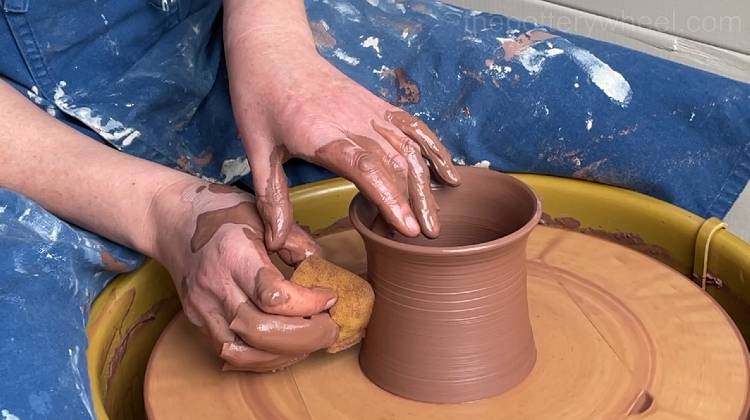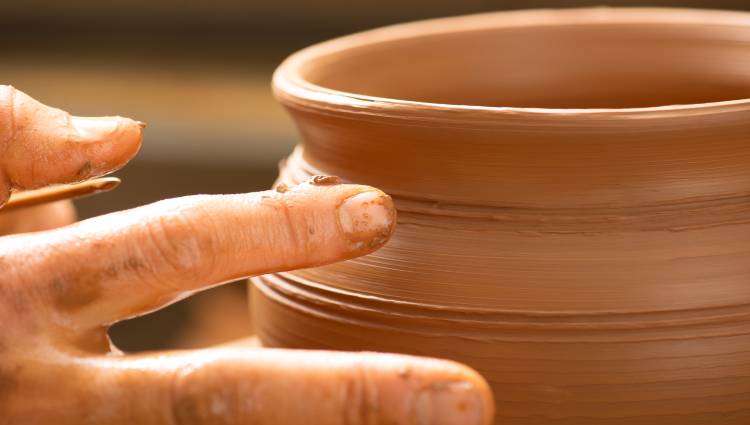The benefit of air dry clay is that it doesn’t need to be fired in a pottery kiln. But can you use air dry clay on a potter’s wheel? Or are you better off using it for hand building?
Some air dry clays are made out of materials that feel and behave like plastic. These can’t be used on a potter’s wheel. However, others are made of natural clay that is reinforced with tiny fibers. These air dry clays can usually be used successfully on a pottery wheel.
In this article, I’ll review three different brands of air dry clay to see how successfully they work on the potter’s wheel. Of the three air dry clays that I tried out, two worked well. They were Amaco Air Dry Clay and Sculpd.
In a Hurry?
Don’t have time to read my review? Here are the two air dry clays that I found worked well on the potter’s wheel.
Top Choice
Sculpd Air Dry Clay
I found Sculpd air dry clay soft, smooth, and easy to work with. It throws well on the wheel. It comes in a pale grey that dries white.
Terracotta Air Dry
Amaco Air Dry Clay
This air dry clay by Amaco comes in three different colors, white, grey, and terracotta. And it can be used on the potter’s wheel.
Different Types of Air Dry Clay
There are lots of different types of air dry clay. Some can be used on the wheel, whereas others are better off being used for hand building, modeling, and sculpting.
Here is a quick overview of the different types of clay that don’t need to be fired in a kiln.
Polymer Clay
Air dry clay is different from polymer clay, which needs to be hardened in the oven. Brands of polymer clay like Fimo and Sculpey are often made from bright primary colors and need to be hardened in a domestic oven once they have been shaped.
They are good for modeling figurines and smaller pieces, but they feel hard and plastic-like to shape. Plus, they don’t mix with water, so they can’t be used on a pottery wheel.
is different from polymer clay, which needs to be hardened in the oven. Polymer clay is often made from bright primary colors and feels like plastic when it’s hardened in the oven.
Cold Porcelain Clay
One type of air dry clay is called ‘cold porcelain’. Its ingredients include cornstarch and glue. Despite its name, it doesn’t contain porcelain. However, when it hardens it can have a delicate, white appearance, which is how it got its name.
Like other air dry clay, it doesn’t need to be fired, hence the name ‘cold porcelain’. Because it’s made of cornstarch and glue, it can’t be used on a pottery wheel.
Paper Clay
There are different types of paper clay. Some paper clay is designed to be used for modeling and sculpting rather than throwing on the wheel. This type of paper clay has a cellulose base and is very lightweight. A good example of this kind of clay is Creative Paperclay.
Other types of paper clay are made from natural pottery clay, including earthenware, stoneware, and porcelain.
Very fine paper or nylon fibers are added to the clay body. These fibers give the clay additional strength when they are air-dried. It’s why they are often described as being ‘reinforced’ with nylon or paper.
Often this type of paper clay can either be air dried or fired in a kiln. I have found that this type of air dry clay does work well on a pottery wheel.
Can You Throw Air Dry Clay?
I decided to test three different types of air dry clay. The brands that I tried were:
This is how I got on with each of these different brands…
Amaco Air Dry Clay
Amaco air dry modeling clay comes in three colors, white, terracotta, and grey. I decided to go for the terracotta-colored clay, which has a nice rich red-brown color.
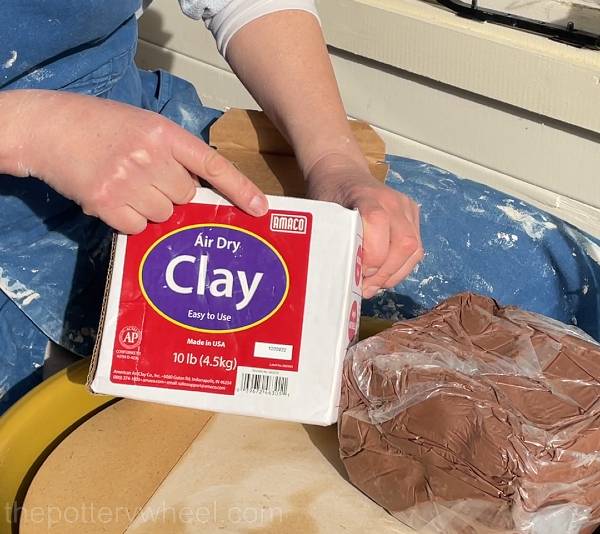
When I opened the clay up, I noticed that it felt soft, moist, and smooth. It also felt a lot like the other regular terracotta clay that I use.
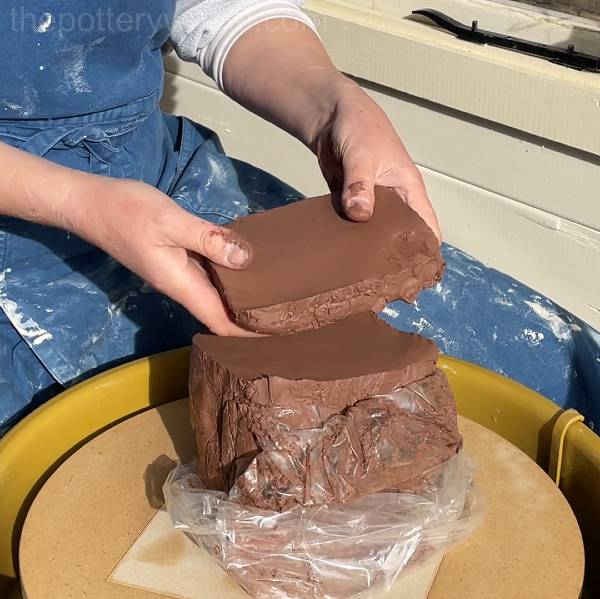
What Is Amaco Air Dry Clay Made From?
I did a little research and I couldn’t find out exactly what was in this clay. I did notice on the Amaco site that it can be fired at bisque temperatures. They specify that you can fire it up to cone 04, to make it harder.
But they don’t say what kind of clay it is. The fact that it can be fired at lower temperatures if you want to suggests that it’s an earthenware clay.
Sometimes with air dry clay, when you slice through the clay you can see fibers that have been mixed in with the clay to reinforce it. I didn’t notice any fibers in this air dry clay, so I’m not sure what is in it to make it harder when it dries.
What is Amaco Air Dry Clay Like on The Potter’s Wheel?
I found that this clay behaved more or less exactly like a regular pottery clay. It was soft enough to wedge normally, and it centered easily on the wheel.
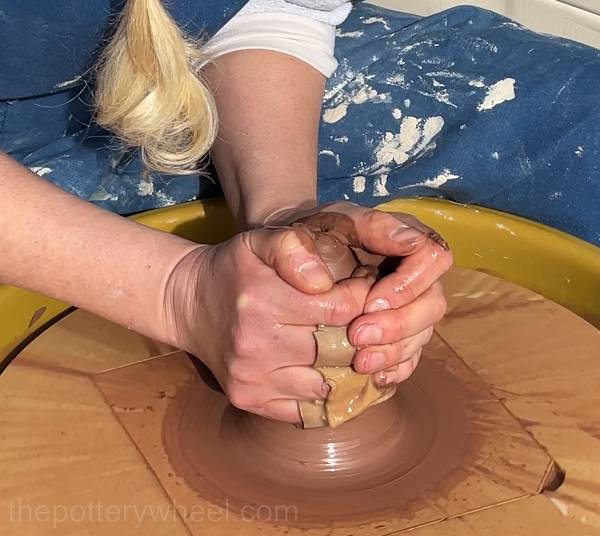
The walls pulled up and shaped easily without collapsing or going wonky. I made a few short concave shaped vases from the clay.
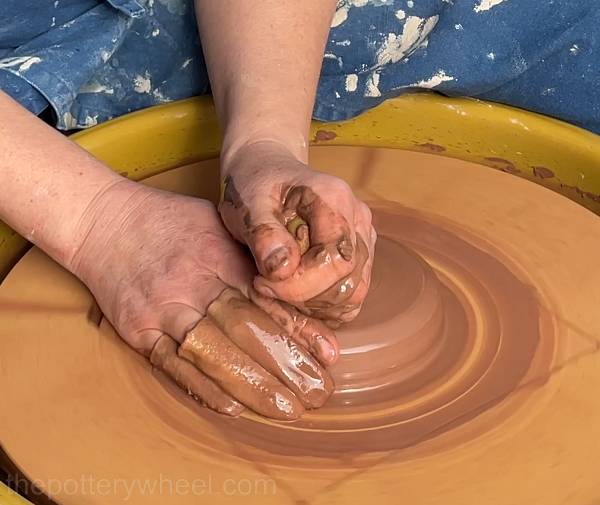
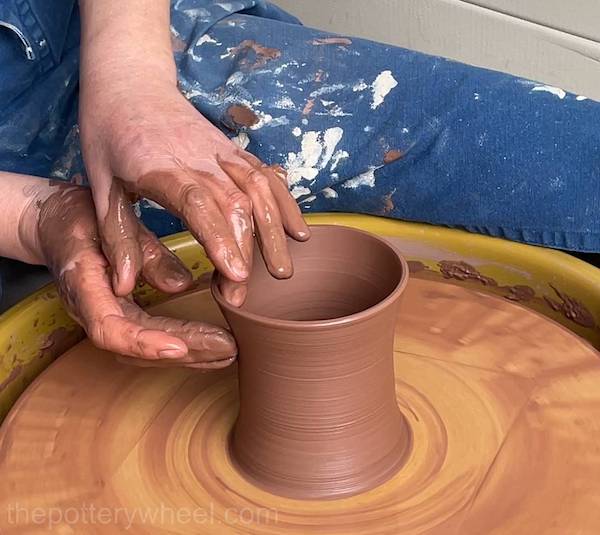
If I hadn’t known it was air dry clay, I wouldn’t have been able to tell the difference between this clay and my usual pottery clay.
I let the clay firm up and then trimmed it on the pottery wheel. It trimmed well and had a nice tidy smooth finish.
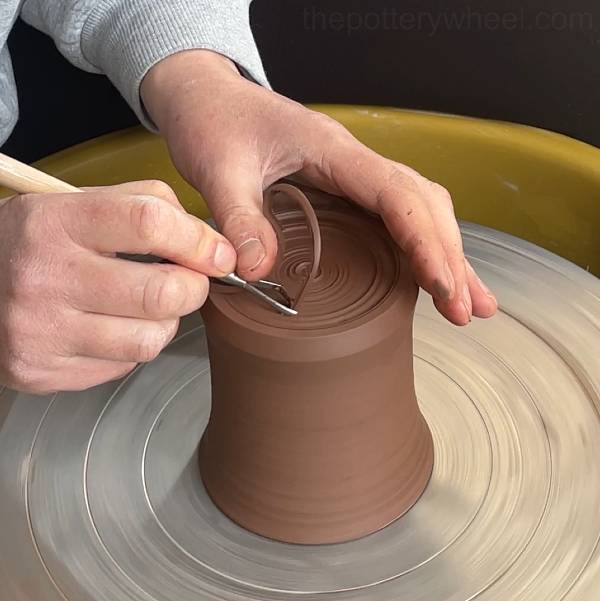
The clay dried slowly in the air over a few days. I waited until it was bone dry and then I decorated it with acrylic paints.
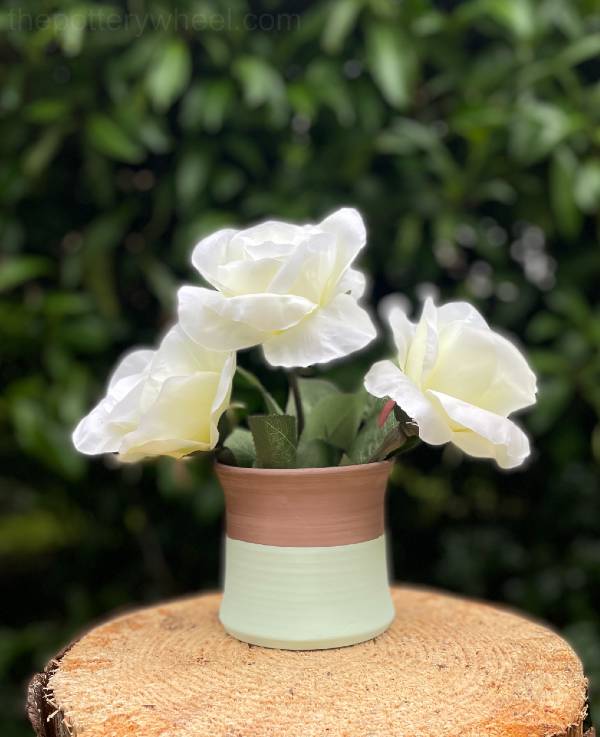
You can also apply a coat of shellac to this clay to make it more water-resistant and give it a bit of extra strength. But it’s important to remember that if it is left to air dry, this clay is not suitable for food and drink, and it is not watertight. If you fill the vase with water it will disintegrate in quite a short space of time.
But it can be used for dry items like dried flowers, holding utensils, and for purely decorative items.
Overall Verdict on Amaco Air Dry Clay
I liked this clay, and if you want to practice throwing on the wheel without firing your pots, it’s a great option.
The only drawback that I can see is that if you do want to fire it, it seems like you can only fire up to bisque temperatures.
This means that if you are firing your pots, they will still be a little porous unless you glaze them. And they won’t be quite as strong as if you were firing at stoneware temperatures.
But, really I think this drawback is nit-picking a little, and I would recommend this clay for someone who wants to throw using air dry clay.
Pros and Cons of Throwing with Amaco Air Dry Clay
Pros
Cons
Sculpd Air Dry Clay
This clay comes in one color. Out of the bag, it’s an off-white light buff color, but when it dries it is a creamy white color.
It comes sealed in an attractive air-tight pouch, and it’s wrapped in saran wrap too. So, the clay is nice and moist and soft.
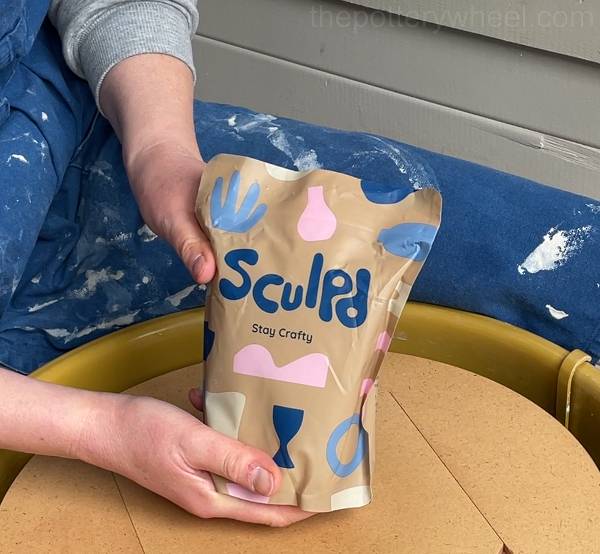
What Is Sculpd Air Dry Clay Made From?
Like Amaco, Sculpd doesn’t specify what this air dry clay is made from. However, I noticed on the back of the packet that it says you can fire it up to 2300F (1260C), which is cone 6 stoneware temperature. So, I’m guessing it’s a stoneware clay.
Slicing through the clay, I did noticed that there were tiny fibers on my clay wire after slicing. So, it seems like it’s a natural clay body that’s been reinforced by fibers.
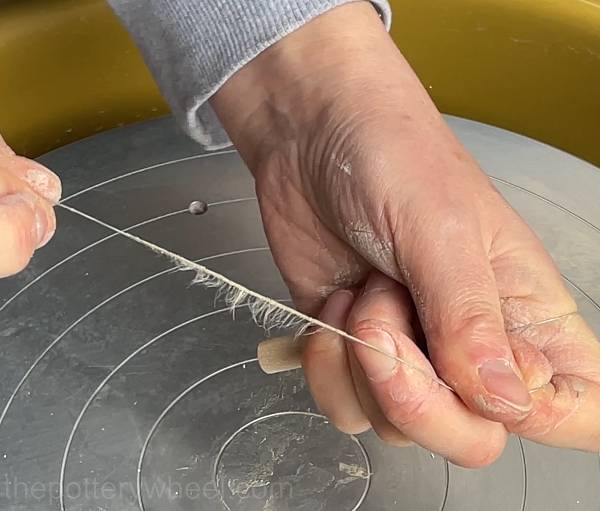
I don’t know if these particular fibers are nylon or paper, and I couldn’t find anywhere that said either way. But, it’s these fibers that give the clay its extra strength if you don’t want to fire your pots. I’ve read that the fibers in air dry clay give it 10 times the strength of normal greenware (source).
The fibers are so tiny though, that the only time you notice them is when you are slicing through the clay.
What is Sculpd Air Dry Clay Like on The Potter’s Wheel?
The second thing that I noticed when I sliced through the clay was that there was a small air bubble in the middle of the clay.
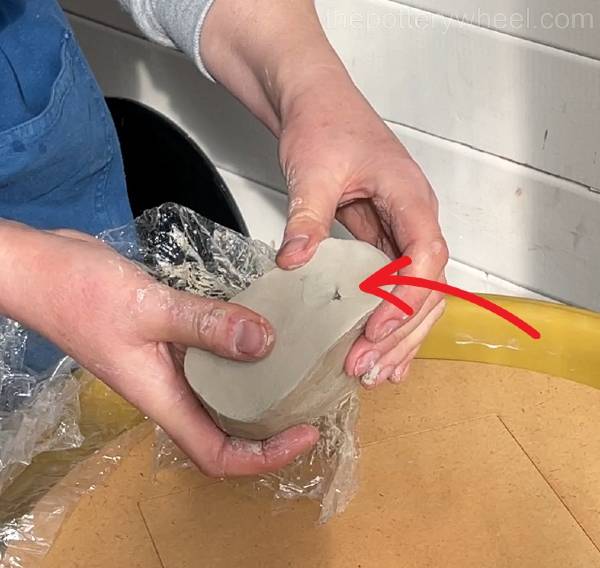
Air bubbles aren’t too much of an issue if you are hand building, as you can just pop them with a needle tool and carry on. But they can be a pest if you are using the clay to throw on the wheel.
Air bubbles in clay feel like little pebbles in the clay, and can make your pot go wonky on the wheel.
Nevertheless, the clay was soft and moist and easy to wedge. So, I wedged it well and made sure that any other air bubbles were gone.
Once the clay had been wedged, it was really nice to throw with. It was soft, smooth and moist.
The clay centered easily and it felt like it had a nice even consistency.
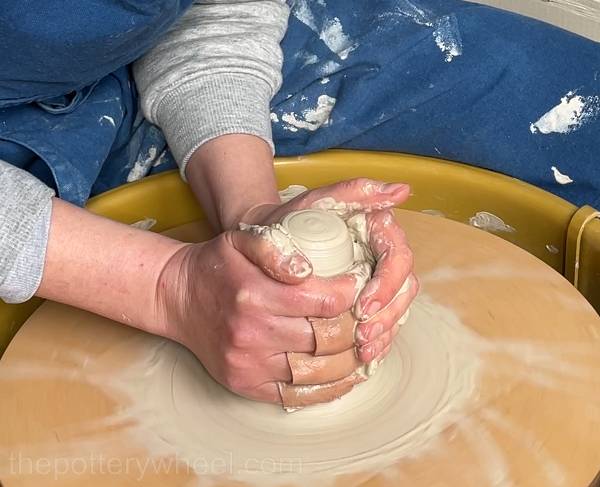
When I pulled and shaped the walls, it felt a lot like my usual stoneware clay.
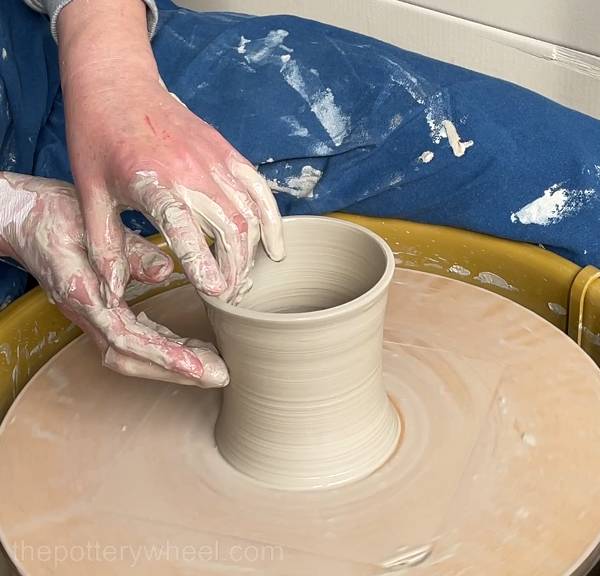
To make a fair comparison, I made another concave shaped vase. It was easy to use this clay on the wheel and I managed to get the walls even and thin, without any further issues from air bubbles.
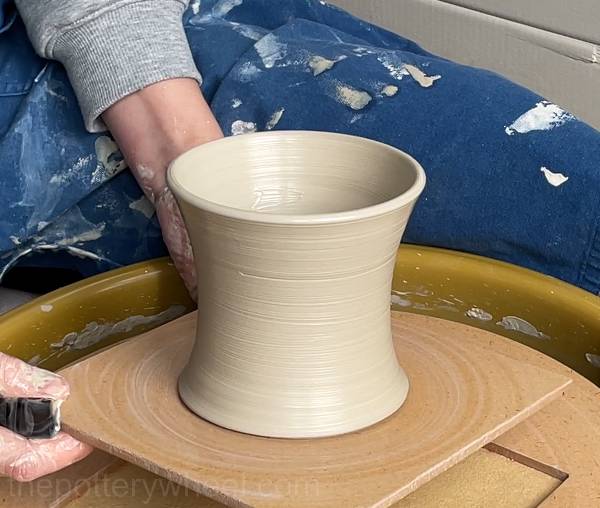
I let the pot become leather hard, then I trimmed it. I noticed the fibers collecting a little on the trimming tool as I trimmed. But the fibers are soft and small and aren’t a problem.
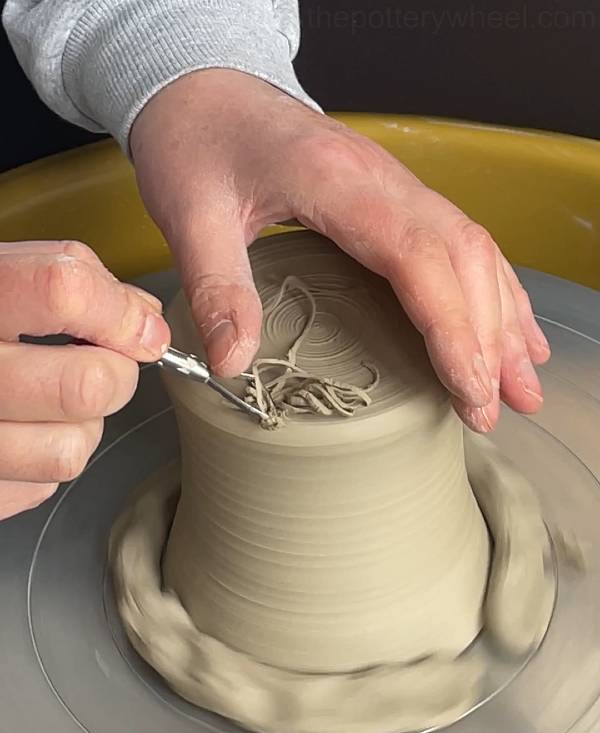
Once the pot was trimmed it looked smooth and nicely finished. When it was completely dry, I painted it with acrylics and used it as a vase for dried flowers.
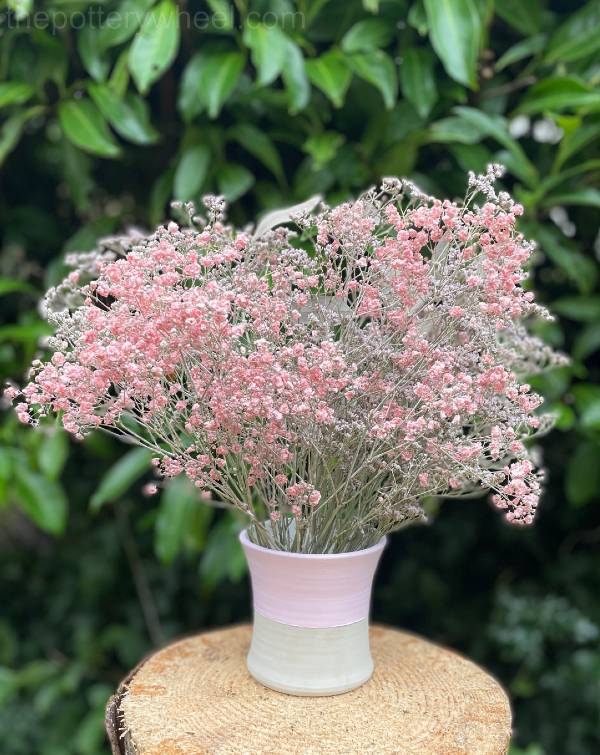
Overall Verdict on Sculpd Air Dry Clay
The Sculpd clay was lovely to use. If I had to choose between the Amaco and the Sculpd, I think I’d choose the Sculpd. There wasn’t much to choose between the two, in that they were both nice to use on the pottery wheel.
However, the Sculpd clay was soft and workable without being sticky. Whereas the Amaco was just a little bit sticky when I first took it out of the bag.
Having said that, the Sculpd clay comes in one color, whereas I do love the terracotta-colored air dry Amaco clay. So, I think if you want to choose between the two, it may depend on whether you want a choice in the clay color.
Pros and Cons of Throwing with Sculpd Air Dry Clay
Pros
Cons
Das Modeling Clay
I used to use Das modeling clay as a kid, and I loved it. Honestly, I was very excited to try it again, and I got that nostalgic tingle when the familiar foil-colored package arrived in the post.
Das comes in three colors. They are white, terracotta, and stone (grey). I chose the terracotta as it looked like a nice warm color.
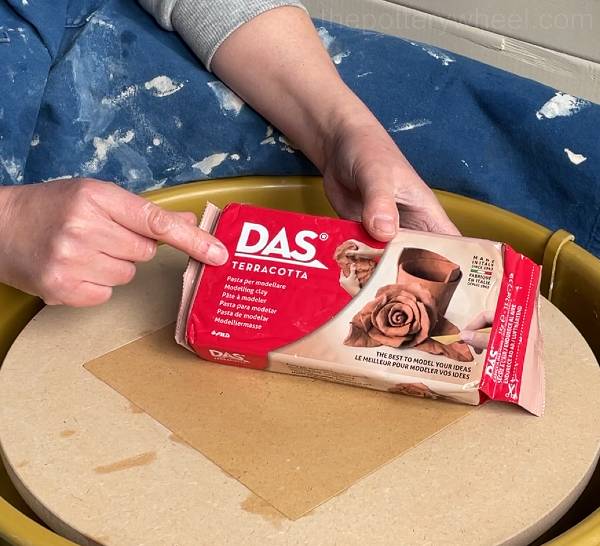
What Is Das Air Dry Clay Made From?
Das is made by a company called Fila. I couldn’t find any information on the Fila site about what Das is made from. One article said it was made of “water, inorganic fillers, and vegetable bindings” (source). And I found another that said it was made of clay minerals, water, and natural fibers.
But, as these descriptions don’t come from the manufacturer, I can’t be sure of their accuracy.
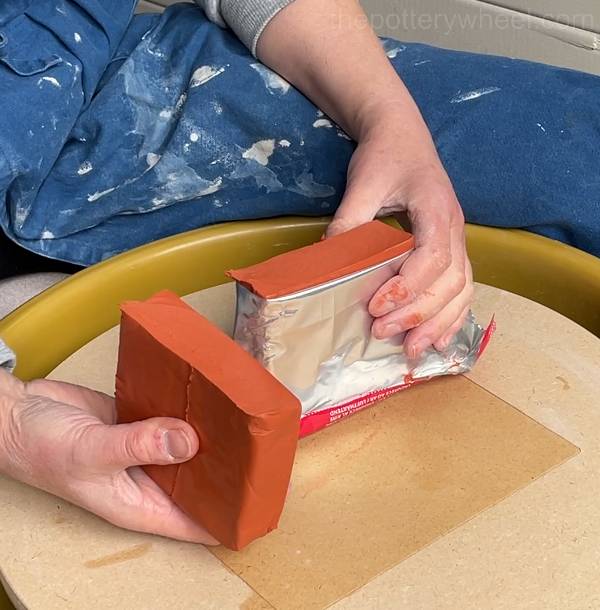
What is Das Air Dry Clay Like on The Potter’s Wheel?
When I took the Das out of its packaging it felt smooth, firm, and a bit rubbery. I tried to pat it into a ball like I would regular pottery clay, but it was too hard to shape through patting.
It wouldn’t be possible to wedge Das, as it feels too much like rubber and is too solid.
I squeezed it into a ball as best I could and then slapped it down onto the wheel head. It didn’t stick to the wheelhead. Instead, it bounced off the throwing bat like a rubber ball!
Eventually, I tried to stick it down to the wheelhead using my thumb to create a little skirt around the ball of Das.
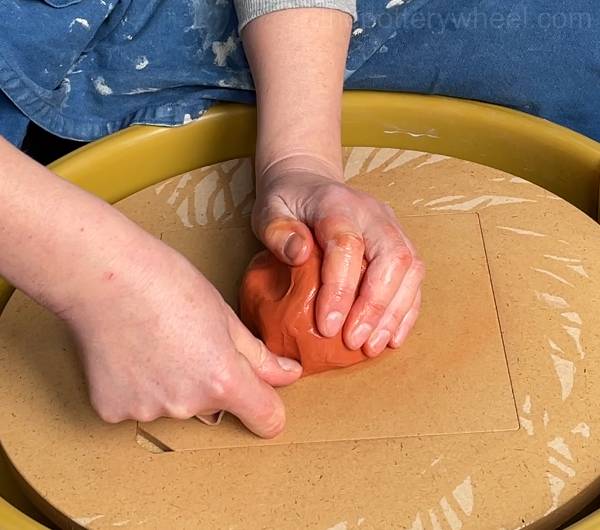
But when I added some water to the Das and started to turn the wheel, it got very slippy and skidded off the wheel head like a block of wet cheese.
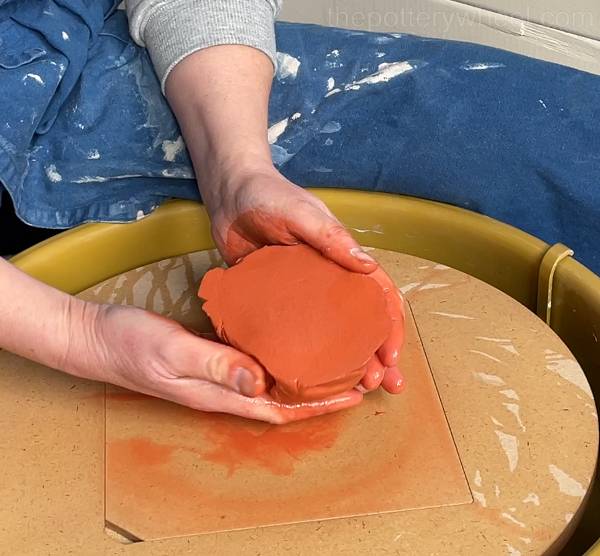
I tried a few times to get it to stick to the wheel, but it wouldn’t adhere and it simply slipped about.
Overall Verdict on Das Modeling Clay
I felt sad that Das didn’t work on the pottery wheel. I have a nostalgic fondness for Das because it kept me so happy as a kid. But hey, I guess it wasn’t designed with wheel throwing in mind. I’ll keep it for some little modeling projects I might get around to making. Or I can give it to my daughter and hope it inspires her too.
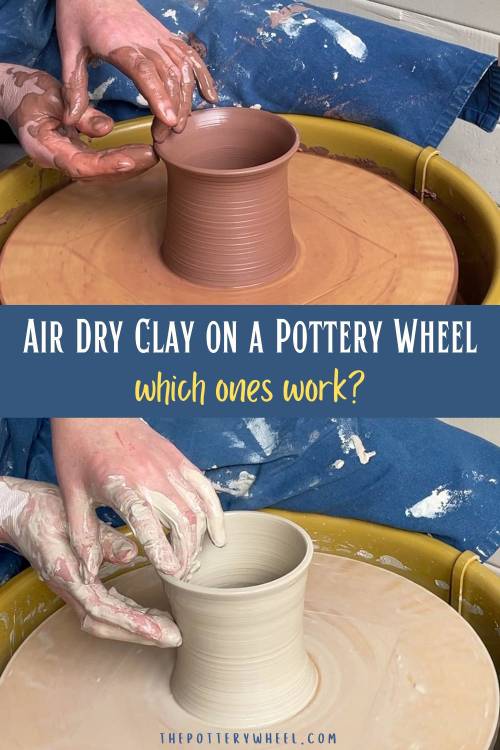
Final Thoughts
Some brands of air dry clay specify that they can be used on a pottery wheel. But other clays which can be thrown, don’t mention that this is an option. Sculpd is an example of this. I didn’t find any information on the packaging or website that said you could use it on the potter’s wheel.
If you are searching for some air dry clay that you can use on the potter’s wheel, I’d recommend looking for products that are described as ‘natural clay’, and ones that contain reinforcing fiber. These are the air dry clay bodies that you can throw on the wheel.

